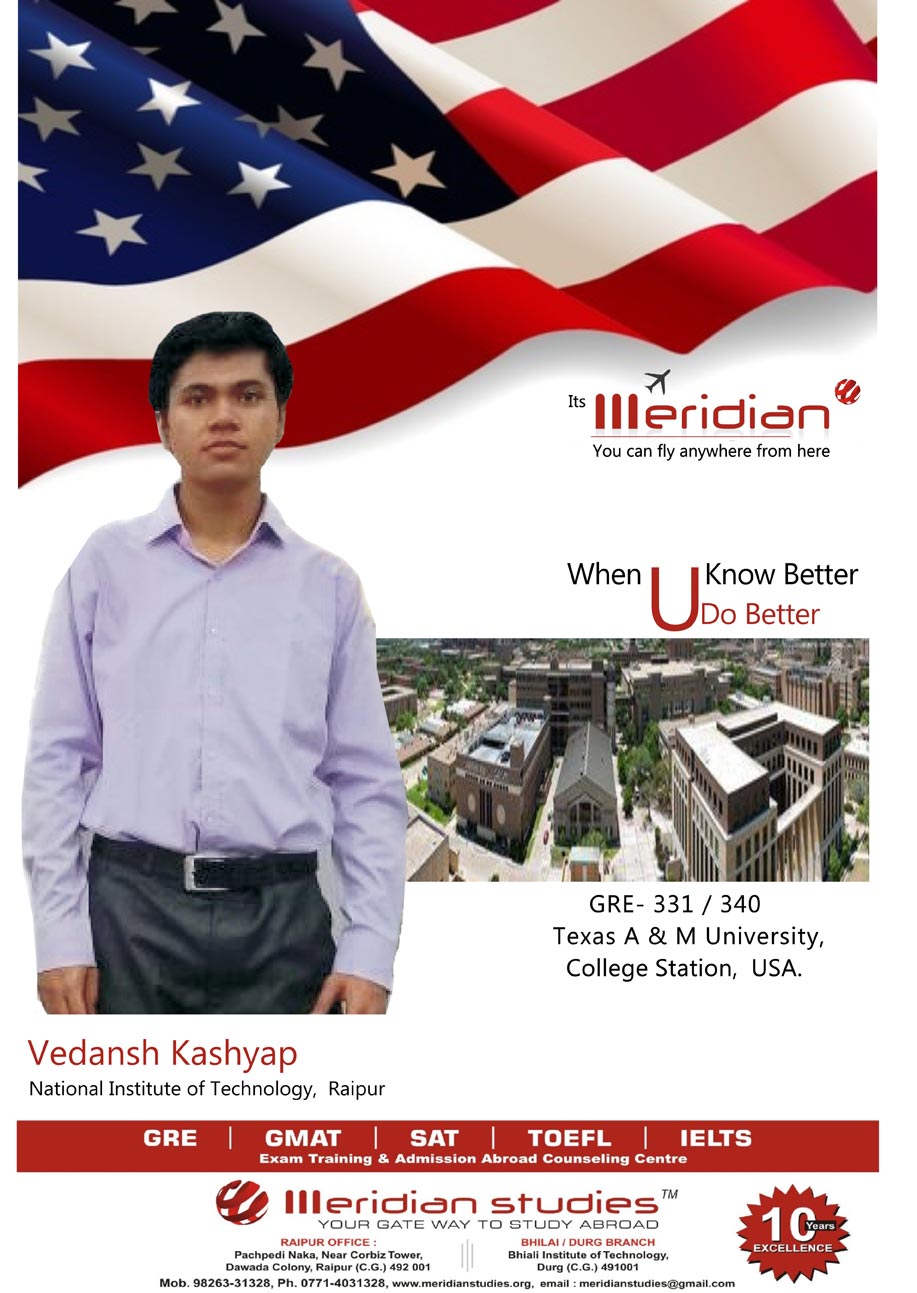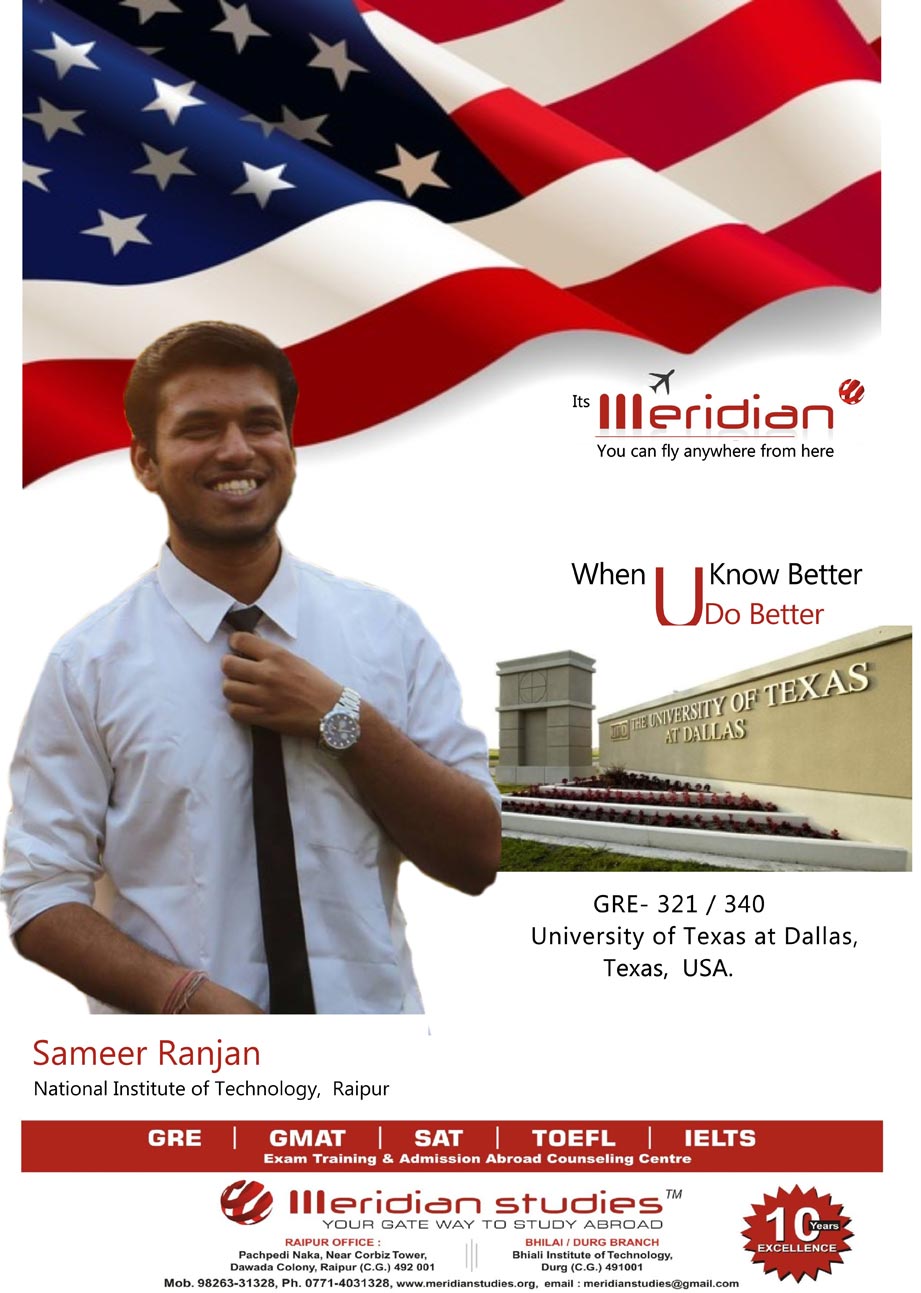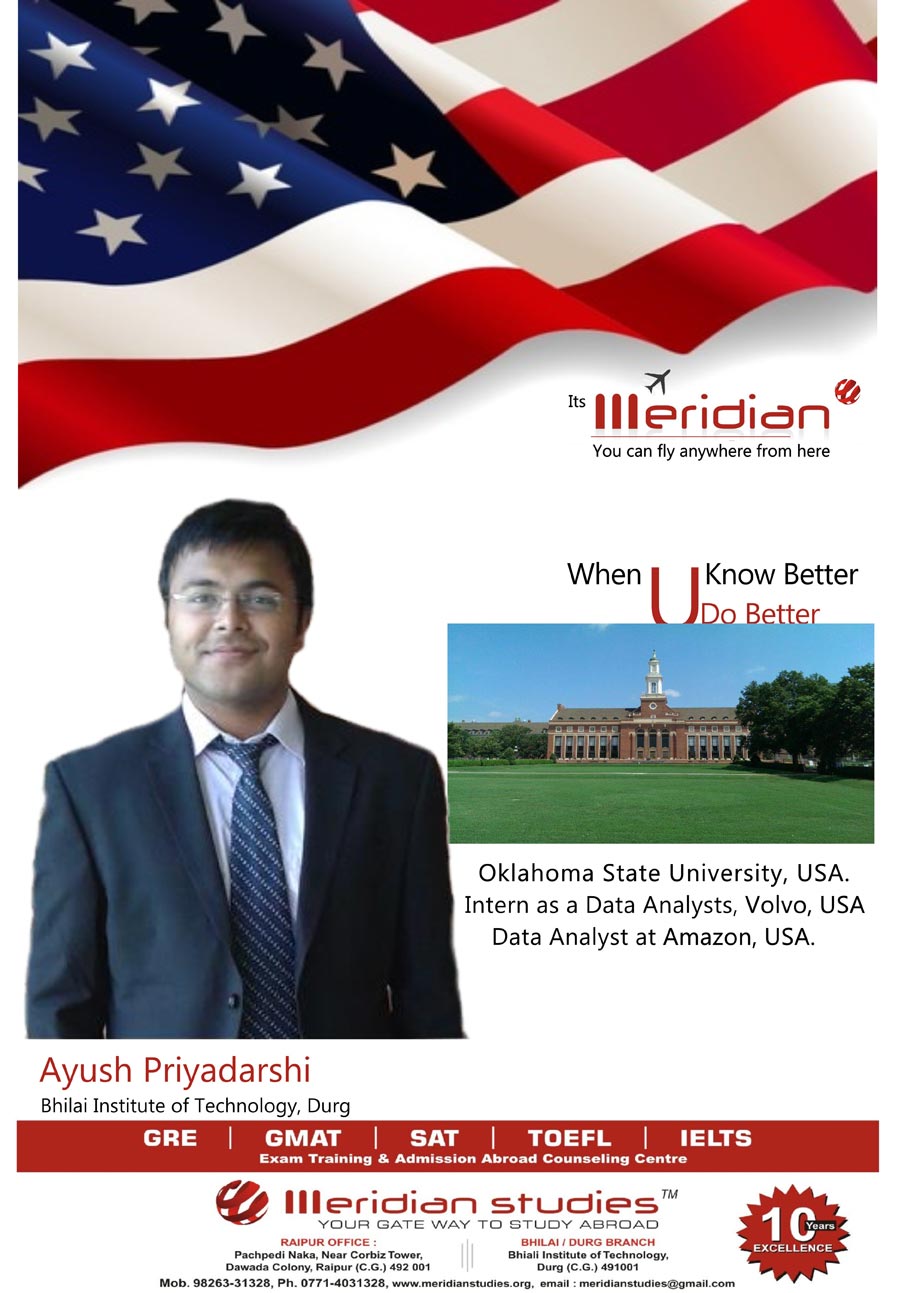IELTS COACHING
What is IELTS TM
IELTSTM stands for International English Language Testing System. It measures a person’s ability to communicate effectively in English across all four language skills listening, reading, writing and speaking – for people who intend to study or work where English is the language of communication.
IELTSTM is recognized by universities and employers in many countries, including Australia, Canada, New Zealand, the UK and the USA. It is also recognized by professional bodies, immigration authorities and other government agencies.
IELTSTM test Structure
Candidates are tested in Listening, Reading, Writing and Speaking. All candidates take the same Listening and Speaking Modules.
| Listening / 4 sections
40 Items 30 Minutes |
| Academic Reading / 3 sections
40 Items 60 Minutes |
| Academic writing / 2 Tasks
[150 and 250 words] 60 Minutes |
| ELTSTM Speaking / 11 to 14 minutes
|
Total Test Time: 2 hours 45 minutes
The first three modules – Listening, Reading and Writing – must be completed in one day. There is no break between the tests. The Speaking Module may be taken, at the discretion of the test centre, in the period seven days before or after the other Modules. The test modules of ELTSTM are designed to cover the full range of ability from non-user to expert user.
IELTSTM Listening
| Time | No of Questions | Sections |
| App. 30 Minutes | 40 | 4 |
Candidates listen to a number of recorded texts. These include a mixture of monologues and conversations and feature a variety of English accents. The listening test is recorded on a CD and is played once only, and candidates are given time to read the questions and write down and check their answers. Answers are written on the question paper as candidates listen. When the recording ends, ten minutes are allowed for candidates to transfer their answers to an answer sheet.
| Task types
The first two sections are concerned with social needs. There is a conversation between two speakers and then a monologue. For example A conversation about travel arrangements or decisions on a night out, and a speech about student services on a university campus or arrangements for meals during a conference. The final two sections are concerned with situations related more closely to educational or training contexts. There is a conversation between up to four people and then a further monologue. For example A conversation between a tutor and a student about an assignment or between three students planning a research project, and a lecture or talk of general academic interest. A range of native-speaker English accents are used in the recordings which reflect the international usage of ELTSTM. A variety of questions are used, chosen from the following types: • multiple choice • short-answer questions • sentence completion • note/summary/flow-chart/table completion • labeling a diagram • classification • matching Marking and assessment of Listening section: One mark is awarded for each correct answer in the 40-item test. A confidential Band Score conversion table is produced for each version of the Listening test, which translates scores out of 40 into the ELTSTM 9-band scale. Scores are reported in whole and half bands. Care should be taken when writing answers on the answer sheet as poor spelling and grammar are penalized. IELTS TM Academic Reading
There are three reading passages with a total of 2,000 to 2,750 words. Texts are taken from books, magazines, journals and newspapers, all written for a non-specialist audience. At least one of the texts contains a detailed logical argument. All the topics are of general interest. They deal with issues which are interesting, recognizably appropriate and accessible to candidates entering undergraduate or postgraduate courses or seeking professional registration. Texts may contain non-verbal materials such as diagrams, graphs or illustrations. If texts contain technical terms then a simple glossary is provided. Texts and questions appear on a question paper on which candidates can write but cannot take out from the examination room. All answers must be entered on an answer sheet during the 60-minute test. No extra time is allowed for transferring answers. Task types A variety of questions are used, chosen from the following types: • multiple choice • short-answer questions • sentence completion • note/summary/flow-chart/table completion • labeling a diagram • matching headings for identified paragraphs/ sections of the text • identification of writer’s views/claims – yes, no or not given • identification of information in the text – true, false or not given • classification • matching lists/phrases Marking and assessment of Reading section: One mark is awarded for each correct answer in the 40-item test. A Band Score conversion table is produced for each version of the Reading test which translates scores out of 40 into the ELTSTM 9-band scale. Scores are reported in whole band and half bands. Care should be taken when writing answers on the answer sheet as poor spelling and grammar are penalized. IELTS TM Academic Writing:
Note for writing Task Candidates may write on the question paper but this cannot be taken from the examination room and will not be seen by the examiner. Answers must be given on the answer sheet and must be written in full. Notes or bullet points in whole or in part are not acceptable as answers. Writing Section, Task 1 The first task requires candidates to write a description of at least 150 words. It is suggested that about 20 minutes is spent on Task 1. In Task 1 candidates are asked to describe some information given in the form of graph / table / chart / diagram etc, and to present the description in their own words. Depending on the type of input and the task suggested, candidates are assessed on their ability to: • organize, present and possibly compare data • describe the stages of a process or procedure • describe an object or event or sequence of events • explain how something works • Summaries the main features of the input. This criterion assesses how appropriately, accurately and relevantly the response fulfils the requirements set out in the task, using the minimum of 150 words. It is basically an information-transfer task which relates narrowly to the factual content of an input diagram and not to speculate explanations that lie outside the given data. Marking and assessment of Task 1, Writing section Each task is assessed independently. The assessment of Task 2 carries more weight in marking than task1.The descriptors apply to the Academic writing Modules and are based on the following criteria. Task Achievement This criterion assesses how appropriately, accurately and relevantly the response fulfils the requirements set out in the task, using the minimum of 150 words. Coherence and Cohesion Coherence criterion is concerned with the overall clarity and fluency of the message: how the response organizes and links information, ideas and language. Coherence refers to the linking of ideas through logical sequencing. Cohesion refers to the varied and appropriate use of cohesive devices (for example, logical connectors, pronouns and conjunctions) to assist in making the conceptual and referential relationships between and within sentences clear. Lexical Resource This criterion refers to the range of vocabulary the candidate has used and the accuracy and appropriacy of that use in terms of the specific task. Grammatical Range and Accuracy This criterion refers to the range and accurate use of the candidate’s grammatical resource as manifested in the candidate’s writing at the sentence level. Writing section, Task 2. For the second task, candidates write a short essay of at least 250 words in response to a statement or question. It is suggested that about 40 minutes is spent on Task 2.They are expected to demonstrate an ability to present a position, construct an argument and discuss abstract issues. In Task 2 candidates are presented with a point of view or argument or problem. Candidates are assessed on their ability to: • present the solution to a problem • present and justify an opinion • compare and contrast evidence, opinions and implications • evaluate and challenge ideas, evidence or an argument The issues raised are of general interest to, suitable for and easily understood by candidates entering undergraduate or postgraduate studies or seeking professional registration. Marking and assessment of Task 2, Writing section Each task is assessed independently. The assessment of Task 2 carries more weight in marking than task1.Task 2 responses are assessed on: • Task Response • Coherence and Cohesion • Lexical Resource • Grammatical Range and Accuracy Task Response In both Academic and General Training Modules Task 2 requires the candidates to formulate and develop a position in relation to a given prompt in the form of a question or statement. Ideas should be supported by evidence, and examples may be drawn from the candidates’ own experience. Responses must be at least 250 words in length. Scripts under the required minimum word limit will be penalized. Scores are reported in whole and half bands. Coherence and Cohesion Coherence criterion is concerned with the overall clarity and fluency of the message: how the response organizes and links information, ideas and language. Coherence refers to the linking of ideas through logical sequencing. Cohesion refers to the varied and appropriate use of cohesive devices (for example, logical connectors, pronouns and conjunctions) to assist in making the conceptual and referential relationships between and within sentences clear. Lexical Resource This criterion refers to the range of vocabulary the candidate has used and the accuracy and appropriacy of that use in terms of the specific task. Grammatical Range and Accuracy This criterion refers to the range and accurate use of the candidate’s grammatical resource as manifested in the candidate’s writing at the sentence level. IELTS TM Speaking:
The test is a face-to-face interview. Candidates are assessed on their use of spoken English to answer short questions, to speak at length on a familiar topic, and also to interact with the examiner. |
||||||||||||||
|
There are three parts to the test and each part fulfils a specific function in terms of interaction pattern, task input and candidate output. The structure of the test is summarized below. Part 1 / Speaking [Introduction and Interview]
Nature of interaction Examiner introduces him/herself and confirms candidate’s identity. Examiner interviews candidate using verbal questions selected from familiar topic frames. Candidates answer general questions about themselves, their homes/families, their jobs/studies, their interests, and a range of familiar topic areas. This part lasts between four and five minutes. Part 2 / Speaking [Individual long turn]
Nature of interaction: Examiner asks candidate to speak for 1–2 minutes on a particular topic based on written input in the form of a candidate task card and content focused prompts. Examiner asks one or two questions to round off the long turn. The candidate has one minute to prepare before speaking at length, for between one and two minutes. The examiner then asks one or two rounding-off questions. Example Part 2 /Speaking [Individual long turn] Describe a teacher who has greatly influenced you in your education. You should say: Ø Where you met them? Ø What subject they taught? Ø What was special about them? Ø Explain why this person influenced you so much? You will have to talk about the topic for 1 to 2 minutes. You have one minute to think about what you are going to say. You can make some notes to help you if you wish. Example Part 2 /Speaking [Individual long turn] Describe a letter you received which was very important to you. You should say: Ø When you received it? Ø Who sent it? Ø What it was about? Ø Explain why it was important to you? Ø You will have to talk about the topic for 1 to 2 minutes. You have one minute to think about what you are going to say. You can make some notes to help you if you wish. Part 3 /Speaking [Two way discussion]
Nature of interaction Examiner invites candidate to participate in discussion of a more abstract nature, based on verbal questions thematically linked to Part 2 topic. The discussion lasts between four and five minutes. Research has shown that the speech functions which occur regularly in a candidate’s output during the Speaking test are: • Providing personal information • Narrating and paraphrasing • Providing non-personal information • Comparing • Expressing opinions • Summarizing • Explaining • Conversation repair · Suggesting • Contrasting • Justifying opinions • Expressing a preference • Speculating • Analyzing Other speech functions may emerge during the test, but they are not forced by the test structure. Marking and assessment / ELTSTM Speaking Speaking performances are assessed by certificated ELTSTM examiners. All ELTSTM examiners hold relevant teaching qualifications and are recruited as examiners by the test centers and approved by British council or IDP: ELTSTM Australia. Detailed performance descriptors have been developed which describe spoken performance at the nine ELTSTM bands. Public versions of these descriptors are available on the ELTSTM website. Fluency and Coherence This criterion refers to the ability to talk with normal levels of continuity, rate and effort and to link ideas and language together to form coherent, connected speech. The key indicators of fluency are speech rate and speech continuity. The key indicators of coherence are logical sequencing of sentences, clear marking of stages in a discussion, narration or argument, and the use of cohesive devices (e.g. connectors, pronouns and conjunctions) within and between sentences. Lexical Resource This criterion refers to the range of vocabulary the candidate can use and the precision with which meanings and attitudes can be expressed. The key indicators are the variety of words used, the adequacy and appropriacy of the words used and the ability to circumlocution (get round a vocabulary gap by using other words) with or without noticeable hesitation. Grammatical Range and Accuracy This criterion refers to the range and the accurate and appropriate use of the candidate’s grammatical resource. The key indicators of grammatical range are the length and complexity of the spoken sentences, the appropriate use of subordinate clauses, and the range of sentence structures, especially to move elements around for information focus. The key indicators of grammatical accuracy are the number of grammatical errors in a given amount of speech and the communicative effect of error. Pronunciation This criterion refers to the ability to produce comprehensible speech to fulfill the Speaking test requirements. The key indicators will be the amount of strain caused to the listener, the amount of the speech which is unintelligible and the notice ability of L1 influence. Scores are reported in whole and half bands. IELTSTM Test Scores |
||||||||||||||
IELTSTM provides a profile of a candidate’s ability to use English. Candidates receive scores on a Band Scale from 1 to 9. A score is reported for each test component. The individual test scores are then averaged and rounded to produce an Overall Band Score according to a confidential Band Score conversion table. Overall Band Scores and individual test scores are reported in whole and half bands.
A descriptive statement giving a summary of the English of a candidate classified at each band level is provided below and is included on the reverse of the Test Report Form.
IELTSTM Band Scores and Description
Band Score 9: Expert user
Candidate has fully operational command of the language appropriate, accurate and fluent with complete understanding.
Band Score 8: Very good user
Has fully operational command of the language with only occasional unsystematic inaccuracies and Inappropriacies. Misunderstandings may occur in unfamiliar situations. Handles complex detailed argumentation very well.
Band Score 7: Good user
Has operational command of the language, though with occasional inaccuracies, Inappropriacies in some situations. Generally handles complex language well and understands detailed reasoning.
Band Score 6: Competent user
Has generally effective command of the language despite some inaccuracies, Inappropriacies. Can use and understand fairly complex language, particularly in familiar situations.
Band Score 5: Modest user
Has partial command of the language, coping with overall meaning in most situations, though is likely to make many mistakes. Should be able to handle basic communication in own field.
Band Score 4: Limited user
Basic competence is limited to familiar situations. Has a frequent problem in understanding and expression. Is not able to use complex language.
Band Score 3: Extremely limited user
Conveys and understands only general meaning in very familiar situations. Frequent breakdowns in communications occur.
Band Score 2: Intermittent user
No real communication is possible except for the most basic information using isolated words or short formulae in familiar situations and to meet immediate needs. Has great difficulty understanding spoken and written English.
Band Score 1: Non user
Essentially has no ability to use the language beyond possibly a few isolated words.
Band Score 0: Did not attempt the test
No assessable information provided.
ELTSTM Test Results
Results are standardized and usually available within two weeks of the test, and Test Report Forms are sent to the candidates and to the sponsor(s)/receiving institution(s). Test centers are not permitted to give results over the phone, or by fax or email.
For how long is a test score valid?
There are a number of variables affecting the length of time over which an ELTSTM score remains valid. As a general rule it is recommended that a Test Report Form that is more than two years old should only be accepted as evidence of present level of ability if accompanied by proof that a candidate has actively Maintained or tried to improve their English language proficiency.
Candidates receive only one copy of their results but additional copies maybe sent by the test centre directly to receiving organizations at the request of the candidate.
There are no restrictions on candidates re-taking the test. The ELTSTM test Partners cannot verify results older than two years.































